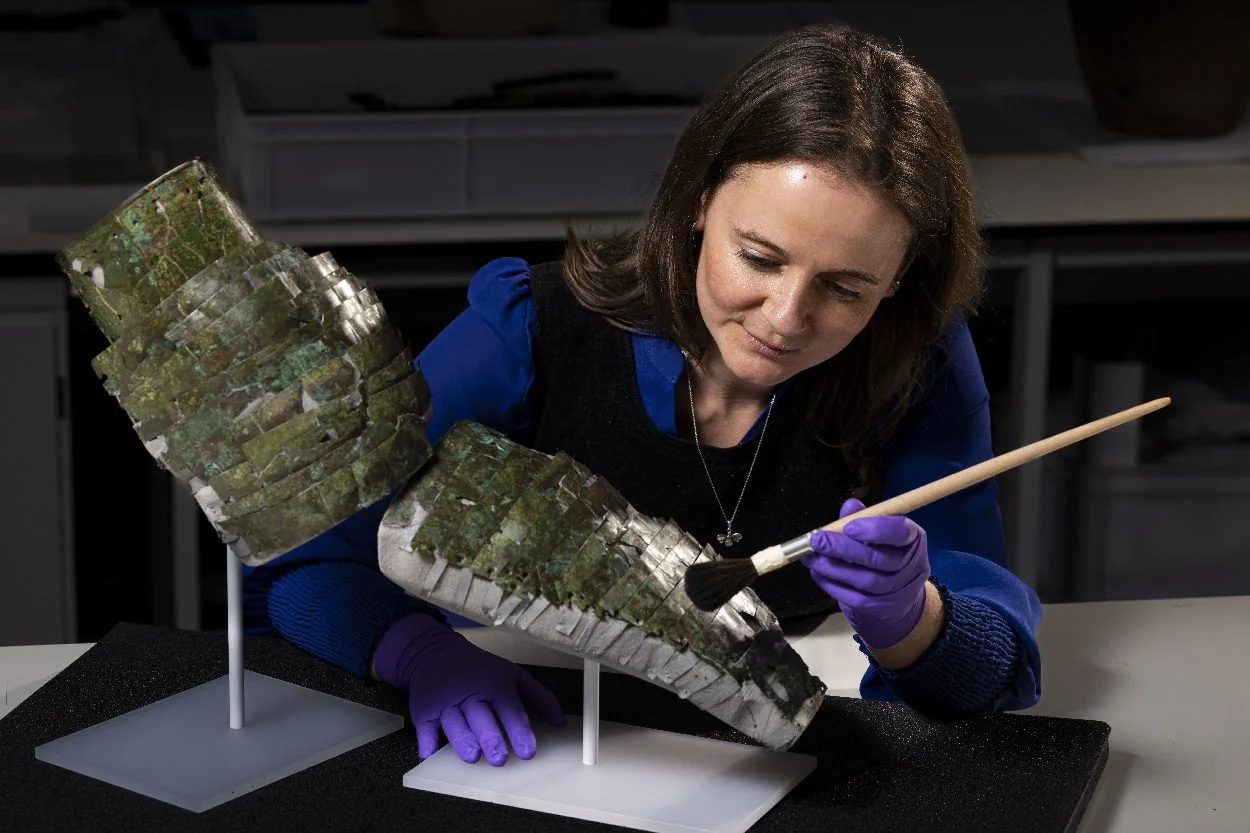Conservators have reconstructed a rare piece of Roman armour from the National Museums Scotland’s collection.
The armour is a brass arm guard dated to the mid-2nd century AD, which will go in display in the British Museum’s exhibition “Legion: life in the Roman army” next month.
Extending from the shoulder, the arm guard concludes with a slender metal square designed to shield the wearer’s hand, possibly inspired by the equipment worn by gladiators in the arena.
Initially identified as body armour, later theories suggested that it served as a thigh guard for a cavalryman. Only in recent years has its true function been understood.
The conservators spent weeks rebuilding the object, which was discovered in hundreds of pieces along with remnants of leather straps at the site of the Trimontium fort near Melrose in 1906.
Dr Fraser Hunter, Principal Curator of Prehistoric & Roman Archaeology at National Museums Scotland, said: “This is an incredibly rare object, and it’s great that this exhibition gave us the opportunity to rebuild it. The transformation is striking.”
Now that it’s been reconstructed, you can picture the legionary who once wore it. It was both protection and status symbol – brass was expensive and would have gleamed like gold on his sword arm. It offers a vivid connection to this important period when Scotland sat on the Roman Empire’s northern frontier,” added Dr Hunter.
The fragments have been in National Museums Scotland’s collection for over a century. The upper section has been on display in the National Museum of Scotland for 25 years, with the lower section loaned to the Trimontium Museum and dozens of fragments stored at the National Museums Collection Centre.
For the first time, these fragments have been united and assembled, providing a window into the life of a Roman legionary in Scotland. After being showcased at the British Museum, the arm guard will be permanently exhibited at the National Museum of Scotland.
Header Image Credit : Duncan McGlynn





